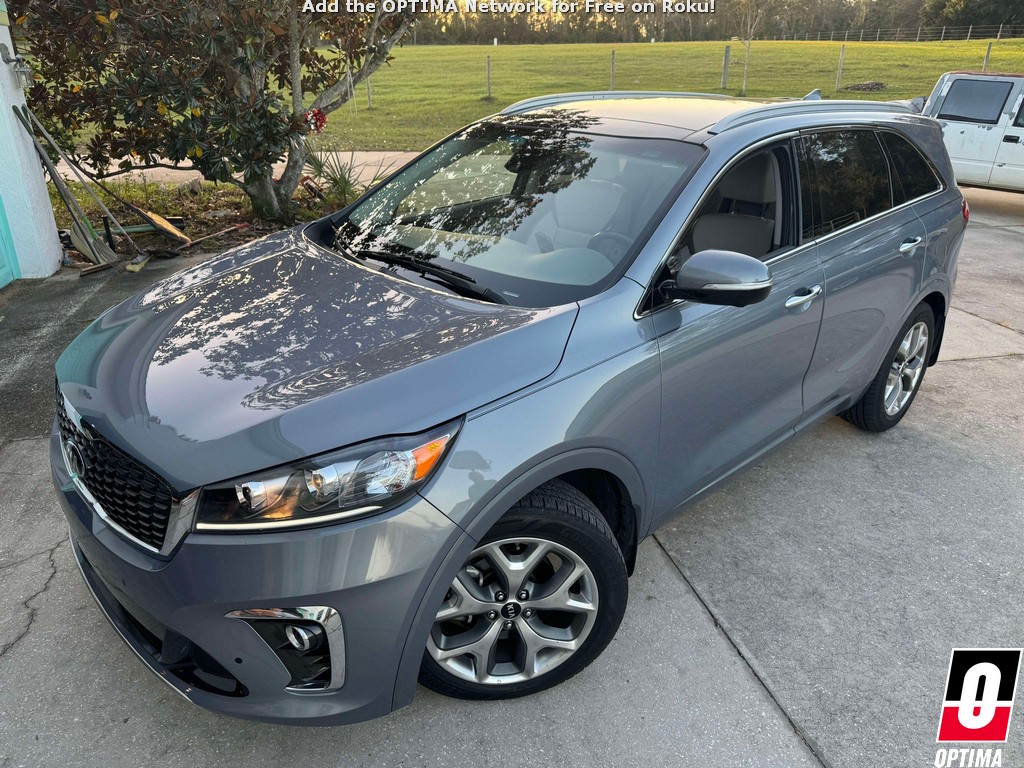2020 Kia Sorento Battery

Cars
- Sponsor
- OPTIMA Batteries
- Location
- Lake County, FL


A funny thing happened on the way to the 21st century- electrical demands in modern vehicles skyrocketed. The Kia Sorento is a perfect example. It may be hard for some to believe, but these cars have been around for more than 20 years. When they were first introduced in the early-2000s, they used a Group 124 battery. Those batteries typically weigh about 40 pounds and offer about 700 cold cranking amps.
Fast forward to the 2020 Kia Sorento and you're now looking at a massive H7 battery, even if your Sorento has a smaller four-cylinder engine. The direct-fit upgrade OPTIMA DH7 YELLOWTOP weighs in at more than 60 pounds, but that extra weight is a good thing, because it's a strong indicator of more energy capacity in the battery. OPTIMA's AGM batteries can also last up to three times as long as a typical "black box" flooded car battery. These significantly larger batteries aren't being used now because newer engines, like the 2.4-liter four-cylinder found in some Kia Sorentos requires a lot of cranking amps. The reason batteries have gotten so big is reserve capacity.
Consumers expect all the bells and whistles to be present in modern vehicles, including the Kia Sorento and virtually all of those bells and whistles are electrical these days. That includes features you may not necessarily associate with batteries, like Start/Stop technology, but that feature alone has been an absolute game changer by itself. Where vehicles used to just need the battery to start the car a few times a day, Start/Stop vehicles can multiply that demand by anywhere from 10x to 100x, depending on how much driving takes place.
In addition to all of those extra starting cycles, batteries in Start/Stop vehicles also need to power all of those bells and whistles we mentioned, when the engine isn't running, like the radio, lights and air conditioning. That places a tremendous amount of demand on batteries in modern vehicles. That is why manufactures like Kia have been steadily increasing the size of the batteries they are installing in their new vehicles, even if the engine sizes are getting smaller.
Larger batteries with more reserve capacity can see shallower discharge cycles, which can lead to longer battery life, but as we once again look at modern times, we see a shift in driving habits that aksi impacts battery lifespan. As many people now work remotely for some or all of their work week, vehicles tend to start sitting for extended periods of time with more frequency. Vehicles like the Kia Sorento still use some electricity as they sit and the result is that many batteries will slowly get discharged over time, from just a lack of the vehicle being driven often enough or under conditions that allow the charging system to keep the battery properly-maintained.
For that reason, we recommend every battery in a modern vehicle should be topped off with a quality battery charger at least once a month. Fully-charged, most batteries will measure at least 12.6.-12.8 volts. Some batteries, like OPTIMA YELLOWTOPs will measure about 13.0-13.2 volts. If you find your battery is consistently fully-charged when you check it monthly, you can expand that maintenance window, but if you find it is constantly below a full state of charge, you may want to consider using a maintenance charger more often.
Proper battery maintenance will increase the lifespan of any car battery and we're so confident of this, we will extend the free replacement warranty on your OPTIMA battery by a full year, if you purchase an OPTIMA 1200 series charger from us, when you purchase your OPTIMA battery.
Fast forward to the 2020 Kia Sorento and you're now looking at a massive H7 battery, even if your Sorento has a smaller four-cylinder engine. The direct-fit upgrade OPTIMA DH7 YELLOWTOP weighs in at more than 60 pounds, but that extra weight is a good thing, because it's a strong indicator of more energy capacity in the battery. OPTIMA's AGM batteries can also last up to three times as long as a typical "black box" flooded car battery. These significantly larger batteries aren't being used now because newer engines, like the 2.4-liter four-cylinder found in some Kia Sorentos requires a lot of cranking amps. The reason batteries have gotten so big is reserve capacity.
Consumers expect all the bells and whistles to be present in modern vehicles, including the Kia Sorento and virtually all of those bells and whistles are electrical these days. That includes features you may not necessarily associate with batteries, like Start/Stop technology, but that feature alone has been an absolute game changer by itself. Where vehicles used to just need the battery to start the car a few times a day, Start/Stop vehicles can multiply that demand by anywhere from 10x to 100x, depending on how much driving takes place.
In addition to all of those extra starting cycles, batteries in Start/Stop vehicles also need to power all of those bells and whistles we mentioned, when the engine isn't running, like the radio, lights and air conditioning. That places a tremendous amount of demand on batteries in modern vehicles. That is why manufactures like Kia have been steadily increasing the size of the batteries they are installing in their new vehicles, even if the engine sizes are getting smaller.
Larger batteries with more reserve capacity can see shallower discharge cycles, which can lead to longer battery life, but as we once again look at modern times, we see a shift in driving habits that aksi impacts battery lifespan. As many people now work remotely for some or all of their work week, vehicles tend to start sitting for extended periods of time with more frequency. Vehicles like the Kia Sorento still use some electricity as they sit and the result is that many batteries will slowly get discharged over time, from just a lack of the vehicle being driven often enough or under conditions that allow the charging system to keep the battery properly-maintained.
For that reason, we recommend every battery in a modern vehicle should be topped off with a quality battery charger at least once a month. Fully-charged, most batteries will measure at least 12.6.-12.8 volts. Some batteries, like OPTIMA YELLOWTOPs will measure about 13.0-13.2 volts. If you find your battery is consistently fully-charged when you check it monthly, you can expand that maintenance window, but if you find it is constantly below a full state of charge, you may want to consider using a maintenance charger more often.
Proper battery maintenance will increase the lifespan of any car battery and we're so confident of this, we will extend the free replacement warranty on your OPTIMA battery by a full year, if you purchase an OPTIMA 1200 series charger from us, when you purchase your OPTIMA battery.
